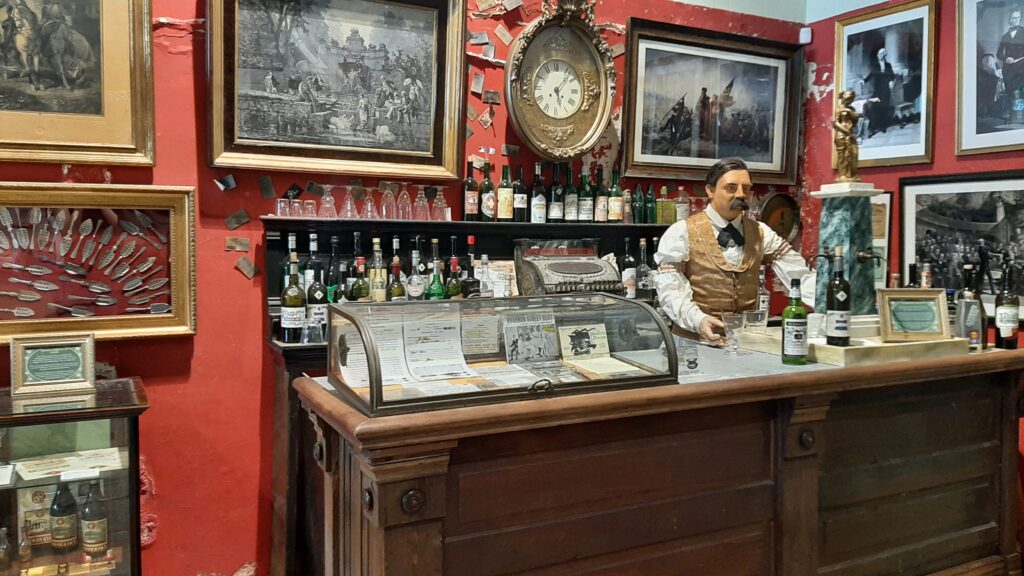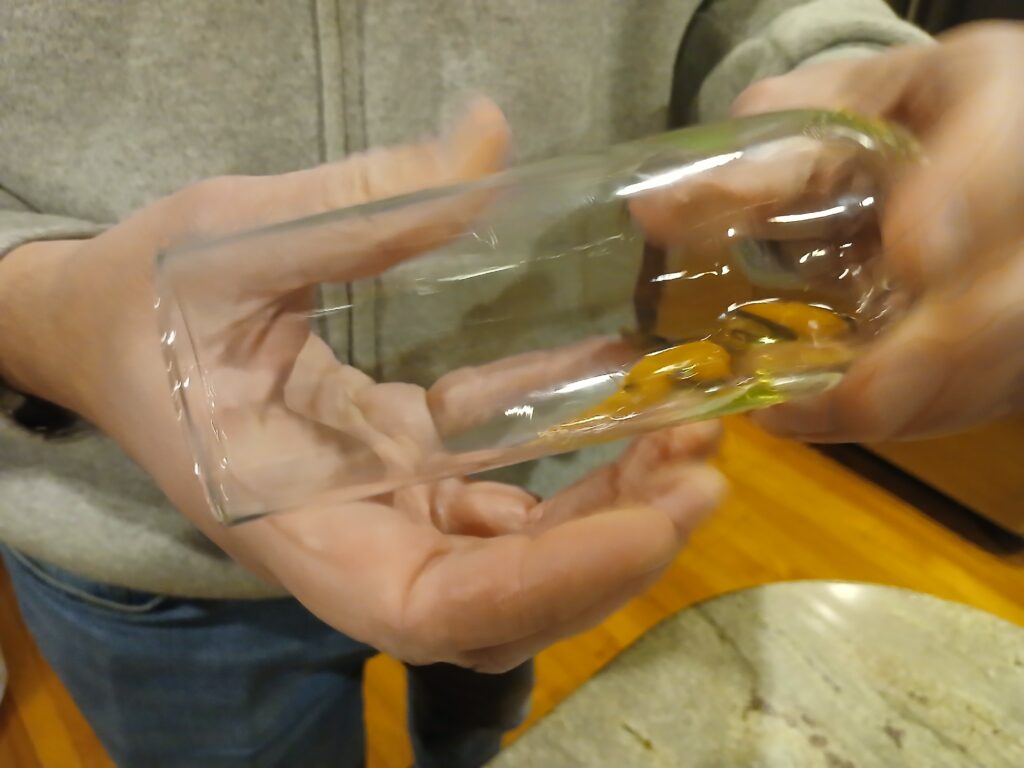This not your typical Jersey Kids post, as absinthe is not a typical kids’ drink. To say the least. If you’re in New Orleans, visit the Museum of the American Cocktail, which is part of the Southern Food and Beverage Museum. The museum is kid-friendly – the cocktail part is too (if kids are interested in learning about alcohol – there are some fun glasses, including tiki glasses there).

A sizable portion of the cocktail area is devoted to absinthe, a liquor not so common in our lives today. But it was very popular in the 1800s – artists and writers especially loved it. Think: Vincent Van Gogh, Edgar Degas, Henri de Toulouse-Lautrec, Oscar Wilde, Mark Twain, Walt Whitman and Edgar Allen Poe. There were coffee houses/cafes that specialized in the drink.

Absinthe is made from wormwood, a bitter herb flavored like anise (black licorice). Egyptians used to use wormwood as a pesticide and to deworm people and animals. Yes, it’s strong! the green color comes from chlorophyll, which the herb releases. It was apparently used by the French troops during the Algerian war (1840s) to kill microbes.

As the wall display shows, absinthe was first distilled in Switzerland in 1798 and it became popular in the 1840s. In France it became cheaper than wine (and had higher alcohol content), becoming popular with the working class.
In 1874 the first Absinthe bar opened in New Orleans, and the drink reached peak popularity at the turn of the century. It was banned in 1912 in the U.S. loses its luster (more on that later). The U.S. ban on absinthe ended in 2007 and it’s regaining popularity again.

Absinthe is known as the green fairy, partly for its color and for the mist that can occur during its preparation in the absinthe ritual.

The government was concerned about thujone, a toxic compound in absinthe, causing its banning in the U.S. followed shortly after by France (France reinstated it a few years after the U.S. did). It was later thought that the thujone caused bad behavior in the drinkers (including being blamed by some for Van Gogh’s mental instability and death), but science proved that the amount of thujone was insignificant to have the effects it was thought to have. And also researchers later posited that of Van Gogh’s lifestyle, absinthe was far from the worst thing to affect his health. See his painted Still Life With Absinthe here.

The ritual: Absinthe is poured into a glass and a spoon like the one you see above is placed on the glass. It is topped with a sugar cube, and then a few ounces of cold water is slowly dripped over the sugar cube to dissove it. The water, dissolved sugar and absinthe are then stirred with the spoon and the drink is consumed.

I learned all this in New Orleans a few years back. So when Absente contacted me to offer me a few bottles of their absinthe, I said yes. You can see that their spoons are shaped like a fairy.

We started off by making La Tour Eiffel, a drink similar to the Sazarac (the drink of New Orleans). It uses 1/4 ounce of absinthe (to rinse the glass – see below); 2.5 ounce of cognac; .1/2 ounce of Cointreau/triple sec, 1/2 ounce Gentian liquor (like Suze, Salers). You can swirl it around your glass and dump it before putting the rest of the mixed drinks (into a prechilled glass) or keep the absinthe in there. Add a lemon peel if you have one (we did not).

La Tour Eiffel, pictured below.

The next night, we went for the absinthe ritual. We don’t have the traditional glasses, which have a well at the bottom just for the absinthe, but these snifters worked fine.

You can see our glass of cold water which we used to drip water onto the sugar cube. Some bars have spiggots to drip the water in a more stable fashion (and obviously it looks nicer than spooning water over).

The sugar below is almost all dissolved.

You can see how much the coloring changes once there’s water and sugar mixed in. You definitely need to stir it, as the sugar went to the bottom. If you like the flavor of licorice, you’ll really like absinthe.

This cloudiness is called the louche effect.
Here are some Absinthe recipes you can try.

